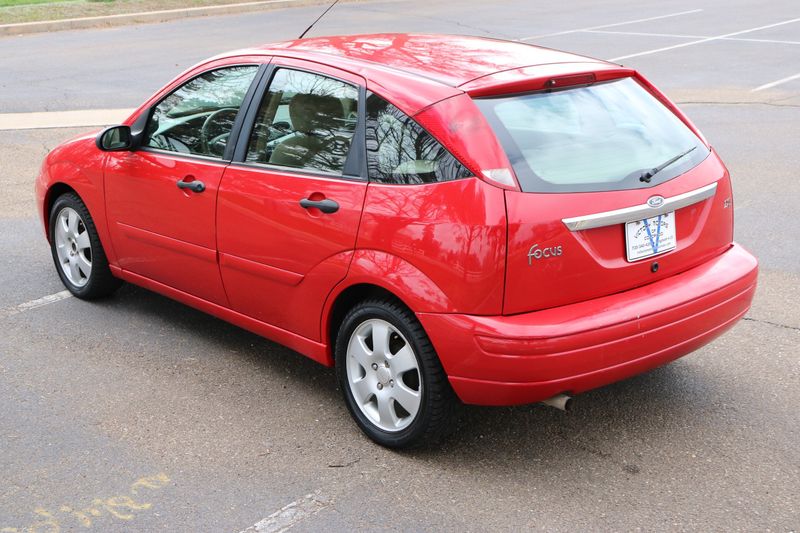
What surprised us most about the SVT Focus was the type of transmission chosen for the job. What's more, 80 percent of peak torque (145 pound-feet) will be available at a low 2000 rpm. SVT has yet to finalize the modified engine's power rating, but our crystal ball says 170 ponies is a good wager. The pistons are new, too, and they bump the compression ratio from 9.6:1 to 10.2:1 that and stronger connecting rods result in a lofty 7500-rpm redline. Expelling the air is the job of new exhaust headers and a high-flow catalytic converter. Chief among the tweaks are variable intake camshaft timing and a two-stage intake manifold that allows optimal airflow at both low and high engine speeds.

Although the displacement remains the same at 2.0 liters, the SVT folks modified numerous pieces to increase engine airflow while preserving low-end torque. The engine is a thoroughly massaged revision of the 130-hp, 2.0-liter Zetec four-cylinder. The body stuff works, looking quite aggressive but tasteful, too. And if SVT can get the front office to go along with a hoped-for price of $18,500, this car could set a bang-for-the-buck record. Judging by our brief look-see of the SVT Focus that you see on this page, we are not lamenting the absence of a turbo under the hood. As for the turbocharged Focus R concept car, it remains just that - a concept. It won't be a turbo, but it will have substantial performance upgrades.


There will be an SVT Focus in showrooms by the end of this year. We also predicted that another souped-up Focus, possibly dubbed the Focus GT, would likely show up with a non-turbo 160-hp version of the stock car's 130-hp four-cylinder engine. That hole was created by Ford when it handed the SVT Contour its walking papers. In late 1999, the year the compact Ford Focus was introduced, we tested a concept vehicle - the turbocharged 220-hp Focus R - and fearlessly predicted it would soon fill a hole in the lineup of hot cars turned out by Ford's Special Vehicle Team (SVT).


 0 kommentar(er)
0 kommentar(er)
